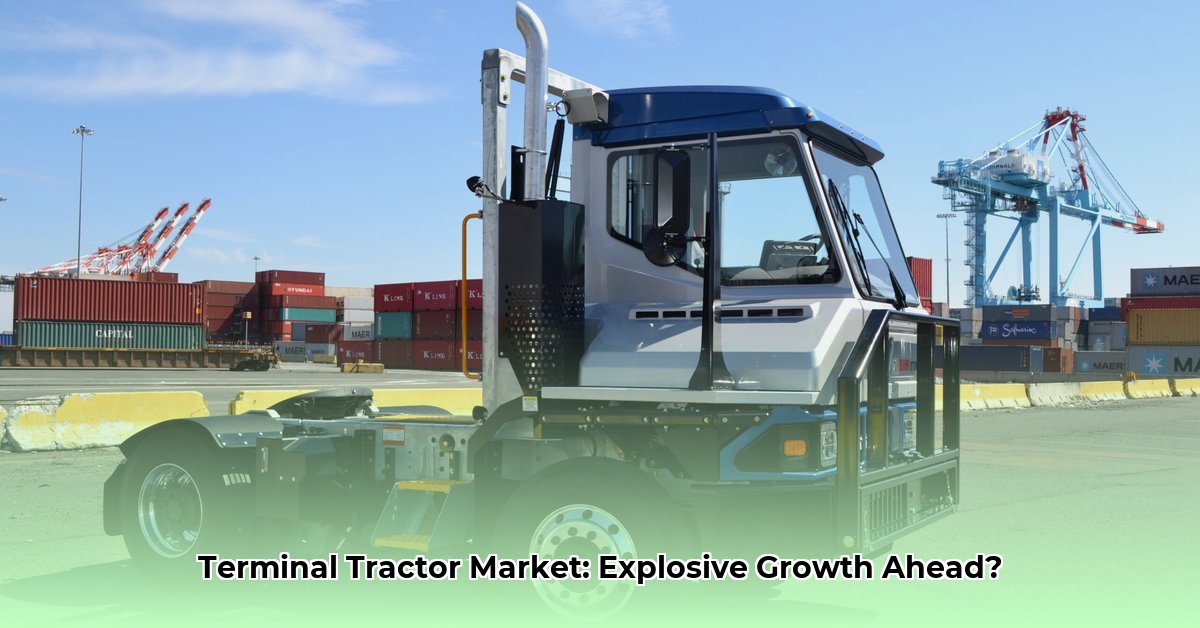
The global terminal tractor market is experiencing robust growth, driven by escalating e-commerce and international trade. This necessitates efficient cargo handling, making terminal tractors a critical component of the global supply chain. For more information on tractor leasing options, see leasing options. This analysis explores market trends, technological advancements, and strategic considerations for stakeholders navigating this dynamic landscape.
Market Overview: A Burgeoning Industry
The terminal tractor market, valued at $752.2 million in 2023, is projected to experience substantial growth, with forecasts ranging from 4.7% to 5.5% annual expansion. This divergence in projections likely stems from differing methodologies and assumptions regarding market penetration of electric tractors and the impact of technological advancements. The primary driver of this growth is the surge in e-commerce and global trade, leading to increased demand for efficient cargo handling solutions.
Fuel Type Analysis: Diesel's Reign and the Electric Charge
Currently, diesel terminal tractors dominate the market due to established infrastructure and robust performance. However, electric terminal tractors are rapidly gaining ground, driven by environmental concerns and stricter emission regulations.
| Fuel Type | Advantages | Disadvantages |
|---|---|---|
| Diesel | Mature technology; reliable performance; widespread infrastructure | High emissions; increasing environmental regulations; fluctuating fuel prices |
| Electric | Reduced emissions; quieter operation; potential for lower lifetime operating costs | Higher initial purchase price; reliance on charging infrastructure; potential range limitations |
This shift presents a crucial decision point for terminal operators. Is the higher upfront cost of electric models justified by long-term operational and environmental benefits? The answer depends on a detailed cost-benefit analysis considering factors like electricity prices, government incentives, and the total cost of ownership.
Technological Advancements: Automation and Autonomous Driving
The industry is undergoing a significant technological transformation with the integration of automation and autonomous driving systems. Collaborations such as the Fernride-Terberg partnership are leading the development of self-driving terminal tractors. These advancements promise increased efficiency, improved safety, and potential mitigation of labor shortages. However, challenges remain in terms of infrastructure adaptation, regulatory hurdles, and ensuring system reliability. What are the unforeseen consequences of widespread automation in this sector, and how can we mitigate potential job displacement?
Challenges and Opportunities: Navigating a Fragmented Market
The market faces challenges including high initial investment costs for electric and automated tractors, the need for substantial investment in charging infrastructure, and the fragmented nature of the market. However, these challenges also create opportunities for innovation, cost reduction, and the development of more sustainable and efficient operations. How can standardization and collaboration among manufacturers be leveraged to overcome market fragmentation?
Stakeholder Analysis: Actionable Strategies
Successful navigation of this evolving market requires tailored strategies for different stakeholders:
| Stakeholder | Short-Term Goals | Long-Term Vision |
|---|---|---|
| Terminal Operators | Evaluate ROI of electric/automated tractors; pilot programs | Full fleet electrification/automation; invest in smart charging infrastructure |
| Manufacturers | Enhance automation; optimize battery technology; reduce costs | Develop standardized interfaces; expand into new markets; explore alternative energy sources |
| Governments/Regulators | Implement incentives for electric adoption; update safety regulations | Promote industry standardization; invest in charging infrastructure; enforce stringent emission standards |
| Logistics Companies | Optimize fleet management; explore integration of automation | Develop comprehensive sustainability plans; integrate data-driven decision making |
Conclusion: A Promising Outlook
The terminal tractor market is poised for continued growth, driven by increasing global trade and technological advancements. The transition to electric and automated vehicles presents both challenges and opportunities, demanding strategic planning and collaboration across the value chain. A thorough understanding of cost-benefit dynamics, technological developments, and regulatory landscapes is critical for achieving sustainable growth and competitiveness in this dynamic market. The future of this industry hinges on a successful transition toward sustainable and technological advancements.
Appendix: Risk Assessment and Regulatory Implications
(This section would include a detailed risk assessment matrix outlining potential risks associated with technological adoption, market fluctuations, and regulatory changes, along with a discussion of relevant regulations and their impact on the market.)